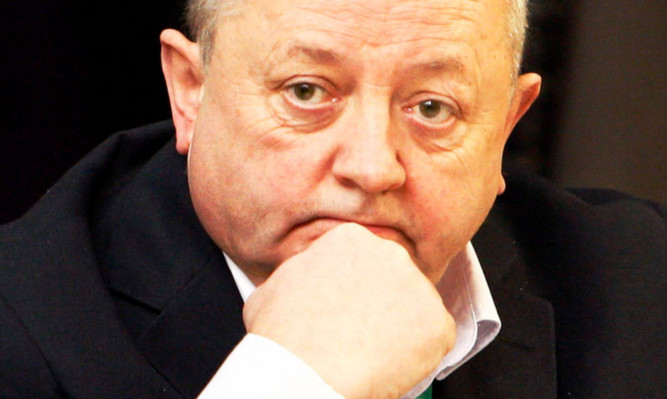NHS Tayside management did not bully or harass staff in an attempt to meet waiting times targets, its chief executive has told a Holyrood committee.
Gerry Marr rejeced any suggestion of staff being placed under too much pressure by bosses at the health board.
He was addressing the Scottish Parliament’s public audit committee on Wednesday, where NHS Tayside representatives were among those asked by MSPs to explain why there was a drop in use of the social unavailability code after revelations of deliberate figure fiddling at NHS Lothian.
Mr Marr said: “I offer contrary evidence to the suggestion that bullying or harassment was any feature of the system within NHS Tayside. As Audit Scotland have said in their report, there was a small number of cases where codes were applied inappropriately, for which we have apologised publicly.”
Mr Marr said staff surveys showed local workers said they felt under pressure to meet the Scottish Government waiting times target of 12 weeks but were well supported by the health board.
Dr Alan Cook, associate medical director at Tayside, said incidents of misuse of social unavailability codes in Tayside were down to “misunderstandings of the rules”, which he described as “complex”.
He added: “Misuse of the unavailability code was isolated to a tiny pocket and training was put in place to address problems.”
During a lengthy committee session at Holyrood, it also emerged that NHS bosses did not brief the health secretary about changes in the number of patients being marked as unavailable for treatment until after problems emerged at Lothian.
NHS Scotland chief executive Derek Feeley condemned deliberate manipulation of waiting times as “unacceptable”.
The waiting lists problem surfaced in 2011 when NHS Lothian was found to have manipulated waiting time codes, marking patients as unavailable for “social reasons” such as failing to get time off work or being on holiday.
Facing extra pressure to meet shorter 18-week guarantees, it was discovered managers were putting pressure on staff to find ways around the system, including marking patients as unavailable if they refused to travel to England for treatment.
Mr Feeley said although there was a “big peak” in the number of patients across Scotland classed as being socially unavailable for treatment in December 2010, this was not flagged up to then Health Secretary Nicola Sturgeon.
He added: “We did have a discussion with the Cabinet Secretary about the winter pressures, but we didn’t have a specific conversation about social unavailability.”
An investigation by Audit Scotland, which scrutinises public spending, found the use of “social unavailability” increased from 11% in 2008 to just over 30% in 2011.
The levels dropped off around the time “fiddled” waiting figures were discovered at NHS Lothian.
Committee convener Iain Gray demanded to know if anybody in the NHS had “felt it was worth drawing the Cabinet secretary’s attention to the fact there was a tripling in the use of social unavailability codes”.
John Connaghan, director for health workforce and performance in the Scottish Government, replied: “There was no cause for concern during that time period.”
